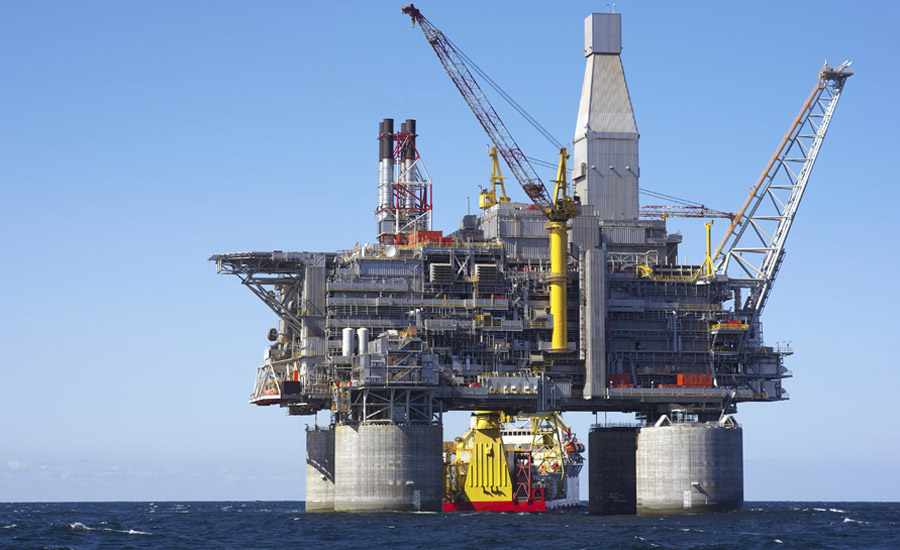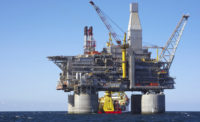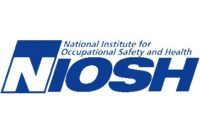The oil and gas extraction industry continues to expand in the United States, but this growth comes with increased risks for workers in the industry. During 2003–2016, 1,485 oil and gas extraction workers were killed on the job, resulting in an annual fatality rate more than six times higher than the rate among all U.S. workers.
The National Institute for Occupational Safety and Health (NIOSH) is collaborating with partners in industry, government, academia, labor, and with other stakeholders to achieve successful and sustainable outcomes to improve worker safety and health across the oil and gas extraction industry. On December 4–5, NIOSH will gather with these partners as well as hundreds of other oil and gas safety and health professionals, managers, and workers in Houston for the 2018 OSHA Oil & Gas Safety and Health Conference. This is the largest gathering of safety and health professionals in the oil and gas extraction industry. Attendees will hear from researchers across many disciplines about research and prevention activities designed to keep the workers in the U.S. oilfields safe and healthy. Below are examples of NIOSH research that will be featured at this conference.
Motor vehicle crashes are the leading cause of work-related death in the oil and gas extraction industry, and fatigue is an important risk factor in many of these crashes. Oil and gas workers drive long distances from their homes, lodging sites, and equipment yards to reach well sites that are often in remote areas. The combination of long trips and long shifts can result in fatigue. Earlier this year, NIOSH published fatigued driving prevention fact sheets for both employers and workers in the oil and gas extraction industry. This information will be shared with researchers and workplace safety and health professionals gathering next year in Coeur d’Alene, Idaho, for a symposium entitled Working Hours, Sleep & Fatigue: Meeting the Needs of American Workers and Employers.
NIOSH is expanding the Fatalities in Oil and Gas (FOG) database to include non-fatal injuries. The purpose of this effort is to provide more detailed, industry-specific data that will increase what is currently known about non-fatal injuries in this workforce. In addition to FOG, our epidemiologists are completing a national survey of oil and gas workers that will provide new information about the workforce and safety and health issues these workers face. This information will be used to help direct future research and prevention efforts. NIOSH is the first to conduct such a survey, and we look forward to sharing the results next year.
Previous work by NIOSH and our partners alerted the oil and gas extraction industry to the hazards associated with manually gauging, sampling, and transferring fluids in oilfield production tanks. NIOSH and partners developed several communication products to highlight these hazards. The first is a video describing the impact of a tank-gauging fatality from the perspective of the worker’s family. NIOSH researchers also wrote a science blog post that describes exposure hazards associated with transferring fluids to mobile tanker trucks. The blog includes a video link that uses forward-looking infrared (FLIR) video to show the hazardous gases and vapors that accumulate around a worker when venting is not done properly. The use of FLIR cameras allows workers to see the hazard, which is not visible otherwise. By sharing this information, NIOSH provides the industry with a better understanding of how hydrocarbon gases and vapors behave and effective strategies for preventing exposures.
Finally, NIOSH is conducting new projects to characterize exposure hazards to workers involved in drilling operations, such as hydrocarbon vapors and dermal exposures to drilling muds. Other NIOSH projects evaluate controls to prevent exposures to hazards previously identified among well servicing operations, for example, respirable crystalline silica, hydrocarbon gases and vapors, and diesel particulate matter.
These projects would not be possible without the cooperation of industry partners in drilling, servicing, and operating companies. However, to continue to advance occupational safety and health research in the oil and gas extraction industry, NIOSH needs to establish new partnerships with industry and other stakeholders. Please consider partnering with NIOSH to improve safety and health in this important industry. For more information about this work or to collaborate with NIOSH, please reach out to David Caruso (DCaruso@cdc.gov).






